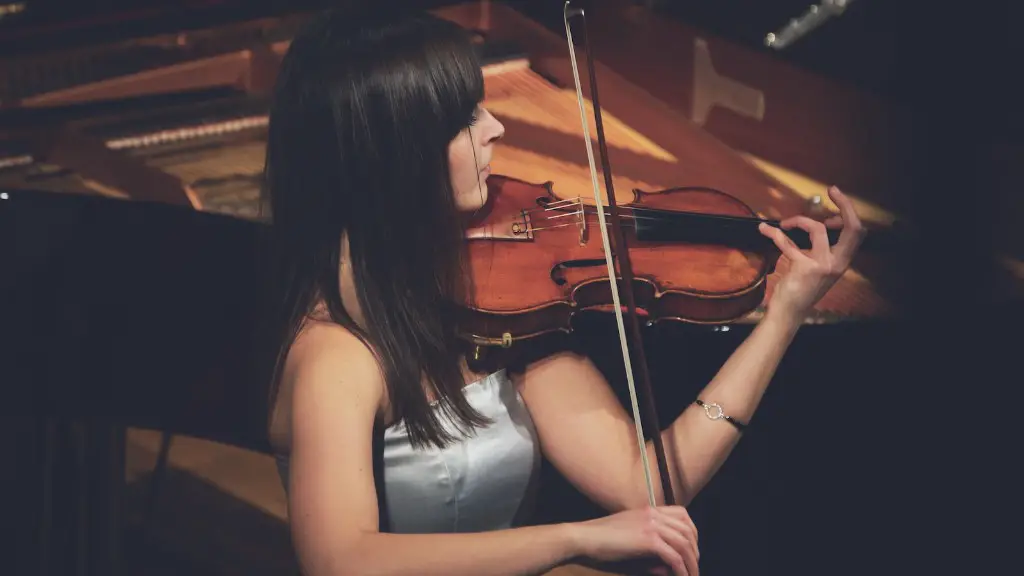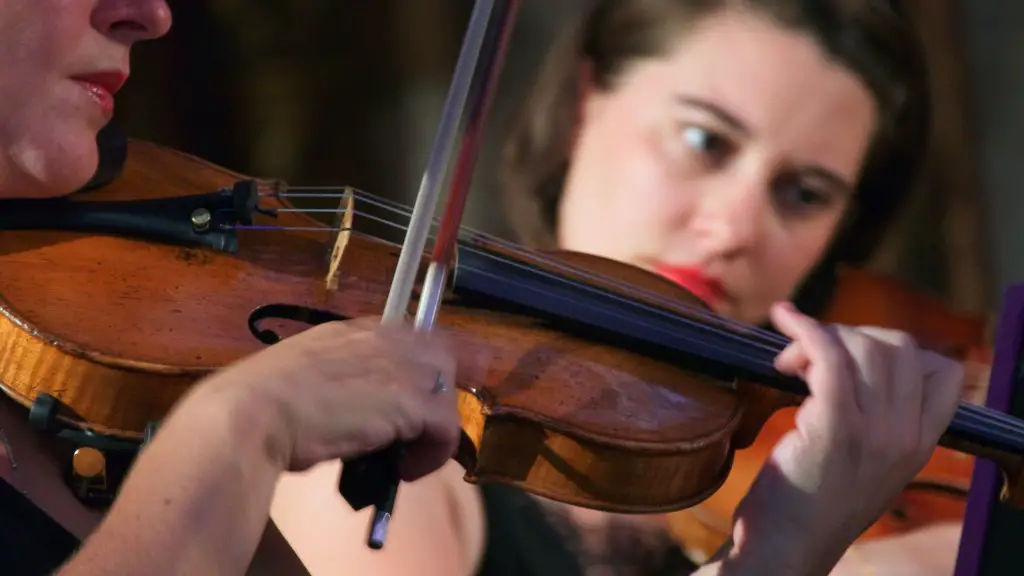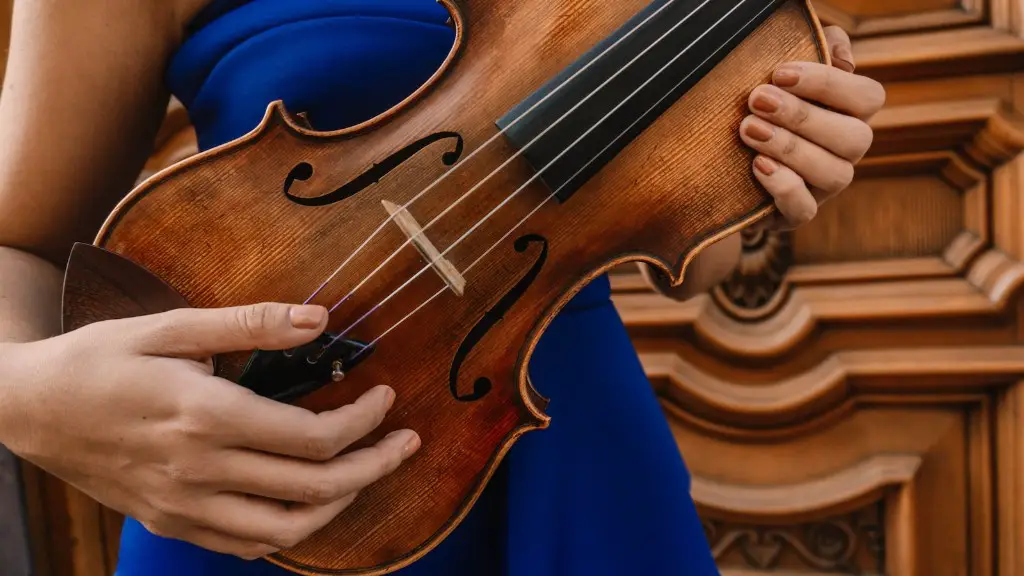The violin is one of the most beloved and widely used instruments in the world. It is also one of the most difficult instruments to master. The violin can be an incredibly rewarding experience for its players, but it requires a lot of hard work and dedication to learn how to play it well.
Playing the violin involves a lot of technical skill. You need to be able to read music, understand basic music theory, and develop strong finger dexterity. Additionally, you need to be able to hold the violin in the correct posture and use proper bow technique. It’s no wonder that many beginners feel overwhelmed when they first start playing!
The best way to learn how to play the violin is with a teacher or mentor who can guide you through the basics and help you develop your technique. It’s also important to practice regularly; short daily practice sessions are more effective than long ones once or twice a week. With consistent practice and guidance, even complete beginners can make significant progress on their instrument.
The Challenges of Playing the Violin
Playing the violin can be a difficult instrument to learn. It requires a great deal of practice and dedication to master its nuances. The challenge lies in learning the correct techniques, such as proper hand positioning, bow control and posture. One must also develop an understanding of rhythm, pitch and tone. To achieve a good sound, it is important to use the right amount of pressure when bowing and fingering the strings. Additionally, one must be able to tune their instrument properly and learn to read music accurately.
Another challenge in playing the violin is developing a good sound quality. This requires proper intonation (the accuracy of pitch) as well as proper control of dynamics (volume). It also involves developing a wide range of expression in order to bring out emotion in pieces. Additionally, vibrato is an important skill that must be developed in order to create a beautiful tone.
Overall, playing the violin is quite challenging but can also be very rewarding if one puts in the effort and dedication needed. With patience and persistence, anyone can learn this beautiful instrument and make beautiful music! It takes time, effort, and hard work but it’s worth it.
Different Levels of Playing the Violin
The violin is a beautiful and complex instrument, and it can be played at many different levels depending on the player’s skill. From absolute beginner to virtuoso, there are countless opportunities to explore and master the violin. For those starting out, basic skills like bowing, fingering, and tuning must be learned in order to make progress. As players become more experienced, they can focus on developing their own sound, learning pieces of music, and honing their technique. Even more advanced players can continue to expand their knowledge of music theory and repertoire. No matter what level you are playing at, the violin offers endless possibilities for growth and creativity.
At its simplest level, the violin is relatively easy to learn. With practice, even beginners can acquire basic skills like basic bow control and intonation. As players become more confident with these fundamentals, they can move on to more challenging techniques such as pizzicato (plucking strings), vibrato (a type of ornamentation), double-stops (playing two notes at once) or even other styles such as jazz or classical. All of these elements require dedication and practice in order to improve upon them.
Regardless of your skill level or experience with playing the violin, it is important to remember that everyone progresses differently in this instrument. It may take some time before you feel comfortable with your playing ability but with patience and dedication you can reach any level of proficiency that you desire!
Choosing the Right Instrument
Playing a musical instrument is an enjoyable experience, and there are many different instruments out there to choose from. One of the most popular instruments is the violin, which is known for its beautiful sound and intricate techniques. So how hard is it to play the violin? The answer depends on your skill level and dedication to practice.
The violin requires a great deal of practice and patience in order to master the instrument. It requires a solid understanding of music theory, finger dexterity, and an ability to read sheet music. Even if you have never played an instrument before, you can still learn how to play the violin with a bit of determination and hard work.
If you are dedicated to learning how to play the violin, it is possible to achieve a high level of proficiency in a relatively short amount of time. However, it can take years for some players to achieve mastery over their craft. The best way for any musician, beginner or experienced, is to practice regularly. Learning how to use proper technique and having access to quality training materials are also important factors in becoming proficient on the violin.
In conclusion, playing the violin can be as easy or difficult as you make it depending on your commitment and dedication to learning the instrument properly. With regular practice and determination, anyone can learn how to play this wonderful instrument!
Factors that Affect Difficulty Level
The violin is an instrument that requires considerable practice and dedication to become proficient. The difficulty of playing the violin depends on several factors, including the size of the instrument, the player’s physical ability, and the level of skill they wish to attain. The size of a full-sized violin can make it difficult for those with small hands or arms to reach all of the strings. Additionally, a lack of flexibility or strength in one’s arms and hands can make proper technique more challenging to achieve. The basics of playing are fairly straightforward, but mastering vibrato, bowing techniques and other advanced techniques requires extensive practice and dedication. This process can be both time consuming and difficult for many players. As such, progressing from a beginner to an intermediate or advanced level on the violin is often not an easy feat.
Common Mistakes Made by Beginner Players
Learning the violin can be a challenging and rewarding experience, but it is important to be aware of some common mistakes that beginner players make. One mistake is not having proper posture while playing. It is important to keep your back straight and your shoulders relaxed in order to maintain good technique. Not holding the bow correctly can also lead to poor sound quality and difficulty playing certain passages. Additionally, it is important to develop the habit of using the correct fingering when playing notes, as this will help you progress more quickly and accurately. Finally, not taking the time to practice regularly can lead to a slower rate of progress and difficulty mastering certain pieces. With patience, practice, and dedication, anyone can learn how to play the violin!
Time and Dedication Needed for Progress
Learning the violin takes a great deal of time and dedication. The instrument is incredibly complex and requires a great deal of practice in order to master it. You must be willing to put in the hours, as well as having the patience to work through difficult passages. Even when you have mastered a few pieces, you will still need to practice regularly in order to stay proficient. Having an experienced teacher can help you learn faster and more efficiently, but even then progress will take time.
The violin is also very physically demanding. It can be difficult on your fingers and arms as you develop the strength and dexterity needed for accurate playing. As with any instrument, it takes time for your body to adjust and become comfortable with the movements required for playing. With hard work and determination, however, you can make steady progress on this beautiful instrument.
The most important thing is to stay motivated. If you find yourself losing interest or becoming discouraged by plateaus in your progress, take a break or try learning a different piece. Remember that learning the violin is a long-term process that requires patience and dedication – but it can be extremely rewarding!
Final Words
Learning to play the violin takes dedication and persistence. While it is a challenging instrument to master, it is also incredibly rewarding. With hard work and practice, any aspiring violinist can play beautiful music. The key is to find an instructor who can help guide you through the learning process. And with lots of patience and practice, you can learn how to play this beautiful instrument.





